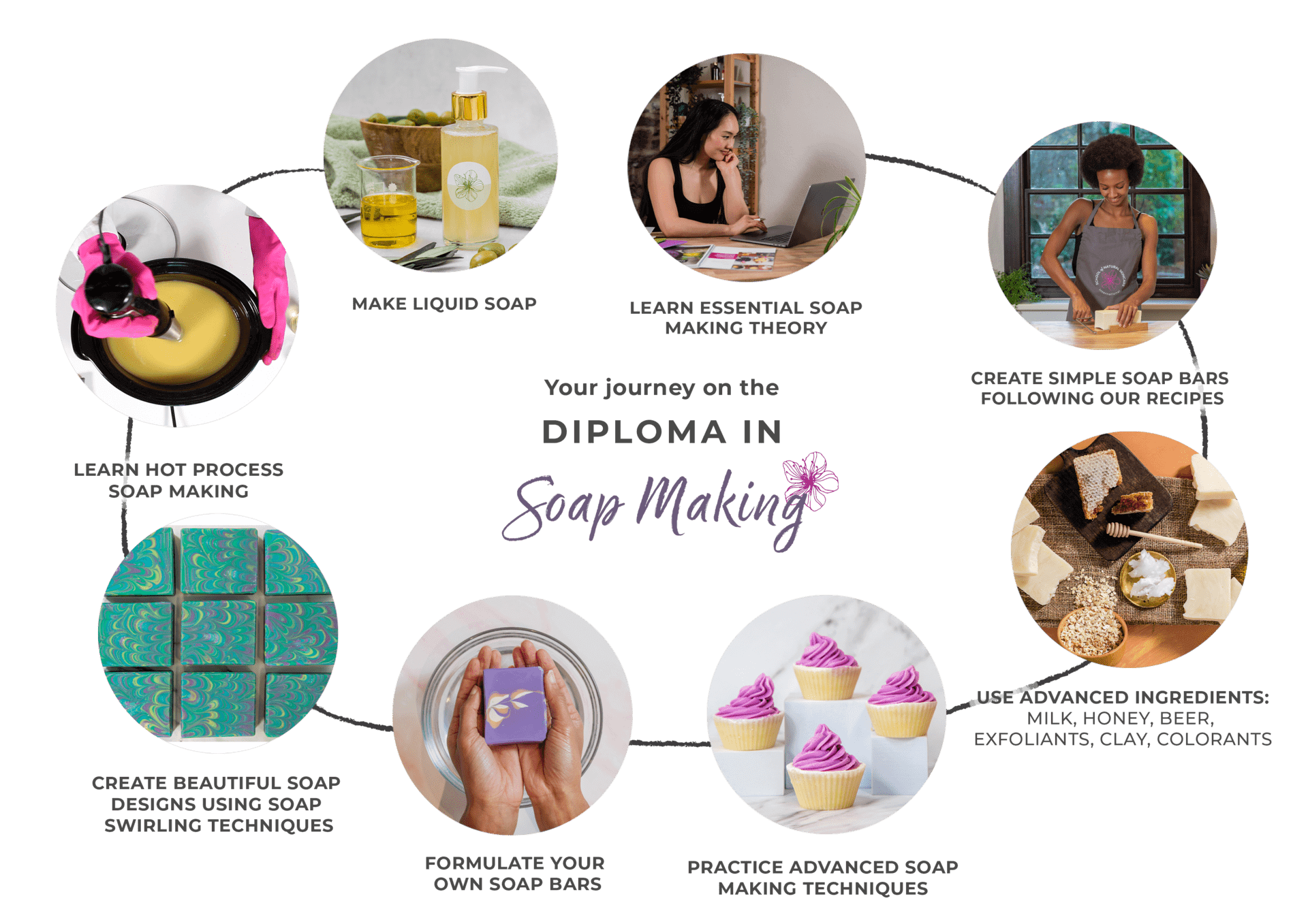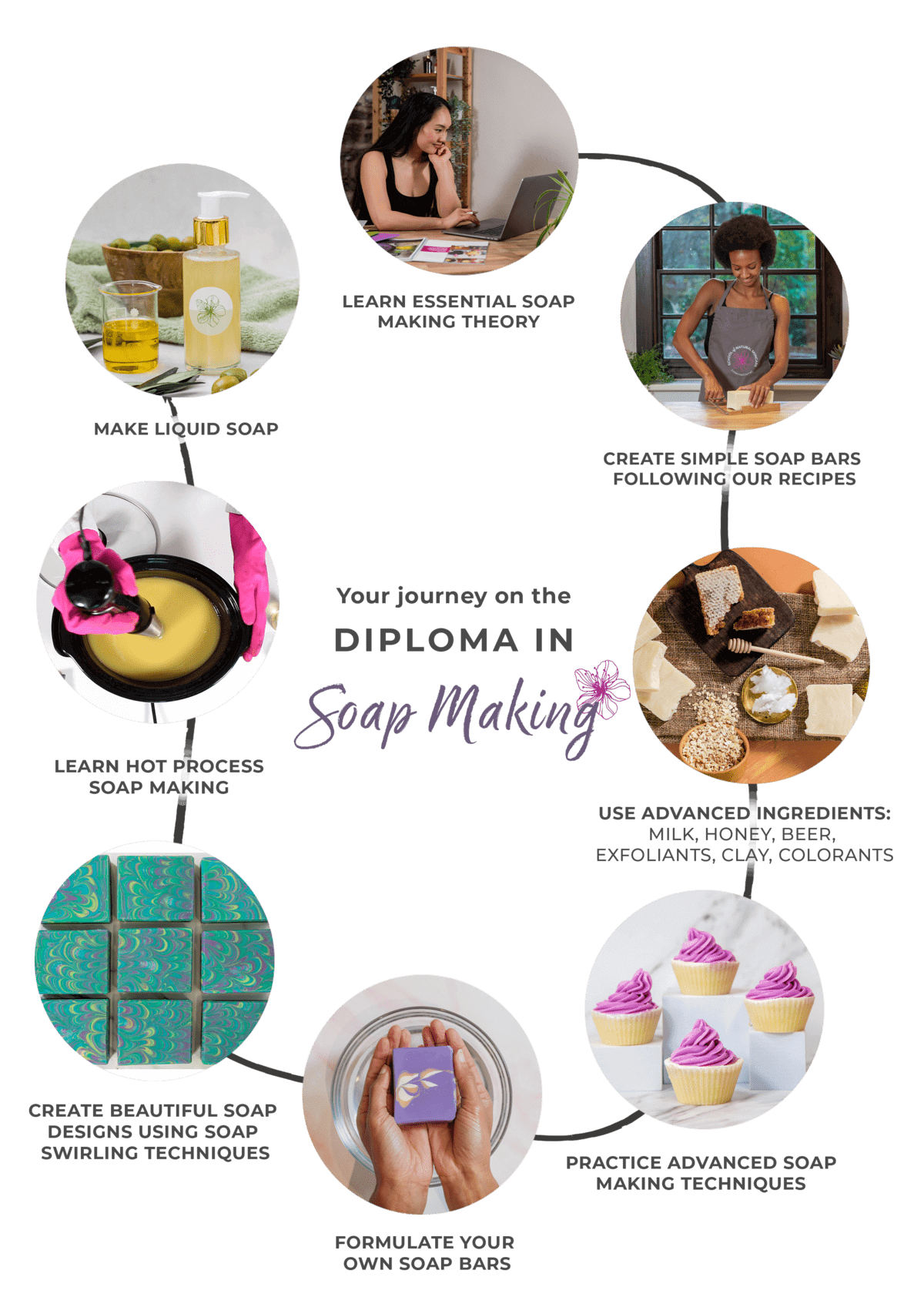Diploma in Soap Making
Learn cold process, hot process and liquid soap making.
Make a wide range of beautiful bar and liquid soap.
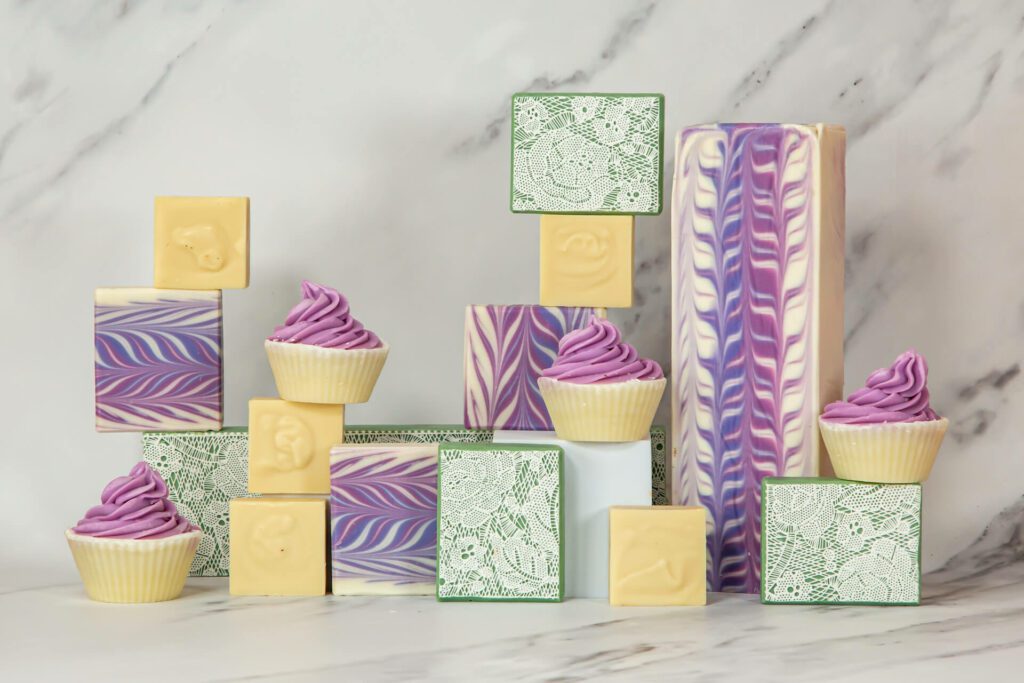
Diploma in Soap Making
Learn cold process, hot process and liquid soap making.
Make a wide range of beautiful bar and liquid soap.
We are proud to bring you the most comprehensive online soap making course available
- Use a wide range of natural ingredients to create nourishing soap – carrier oils, plant butters, milk, yogurt, beer, honey, sugar, salt, botanicals, clay, charcoal and more!
- Create palm-free, vegan and/or organic soap.
- Color your soaps with pigments and botanical colorants and learn 10 soap swirling techniques to create stunningly beautiful soap bars.
- Make soap bars using two different methods: cold process and hot process soap making.
- Create liquid soap for use on the hands and body, plus make a household cleaning soap for dish washing.
- Follow our recipes and formulate your own soap recipes.
It’s usual to feel a little intimidated or apprehensive when you start out making soap; you are creating a chemical reaction (saponification), after all!
That’s why taking a comprehensive course from a trusted school that includes best practices and all the relevant safety information is so important.
We provide lots of clear, step-by-step video tutorials for you to follow, detailed course textbooks filled with photos to illustrate the key processes, and tutor support, so you never need to feel stuck or unsure.
Join us to make soap with confidence, build on your abilities as you become more experienced and empower yourself with new skills that will last a lifetime.
Why create your own soap?
- Effective, natural cleansing. Soap bars provide gentle, effective cleansing for the hands and body. Soap also removes germs like viruses and bacteria which helps prevent infections.
- Zero-waste. Soap bars don’t require any packaging!
- Cost effective. Soap making ingredients are inexpensive and one batch makes a lot of soap bars.
- Economical to make in terms of time. Just one hour of hands-on time yields many soap bars!
- Long shelf-life. Soap bars have a shelf-life of up to two years.
- Gentle and nourishing. Made using oils and butters, soap nourishes and conditions the skin. Plus soap contains glycerin – a humectant that moisturizes the skin.
- Preservative-free. The alkaline pH of soap bars means it is impossible for microorganisms to live in or on them, therefore no preservative is required.
- Beautiful and creative. By learning soap swirling techniques you can create soaps that are works of art.
Learn to make a wide range of nourishing soaps
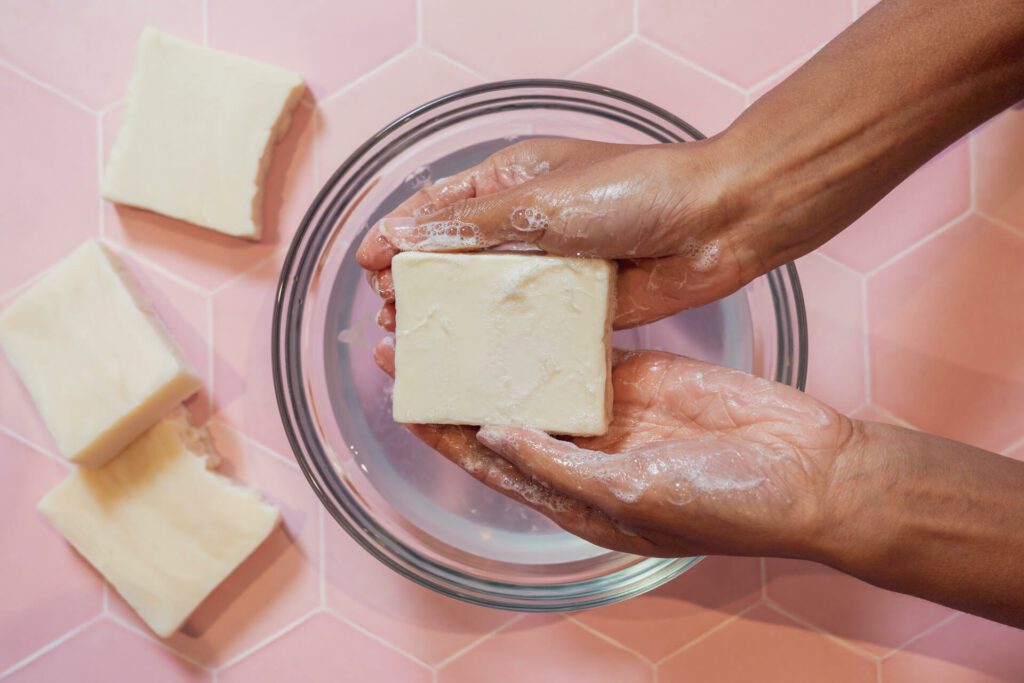
Cold process soap making
Simple nourishing soap bars
Palm-free soap bars
Castile soap bars
Exfoliating soap bars
Colored soap bars
African Black Soap-Inspired Soap bars
Milk soap
Honey soap
Charcoal soap
Beer soap
Cupcake soaps
Lace soap
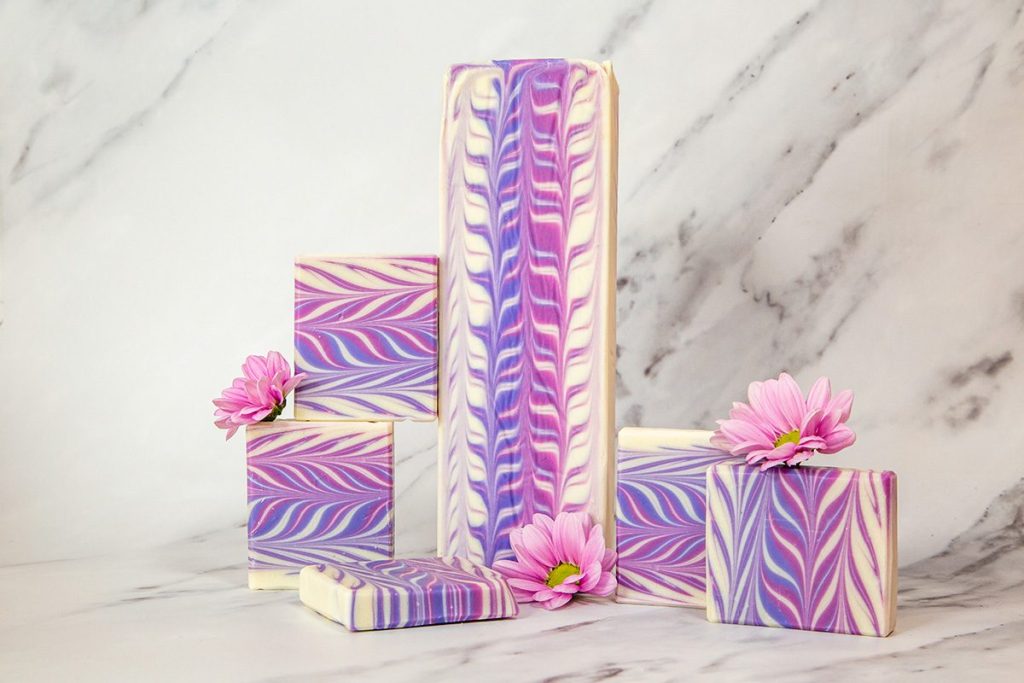
Cold process soap design: Soap swirling techniques
Drop swirl
In-the-pot (ITP) swirl
Taiwan swirl
Hanger swirl
Secret swirl
Column pour
Pipe divider swirl
Peacock swirl
Simple swirl
Mica swirl
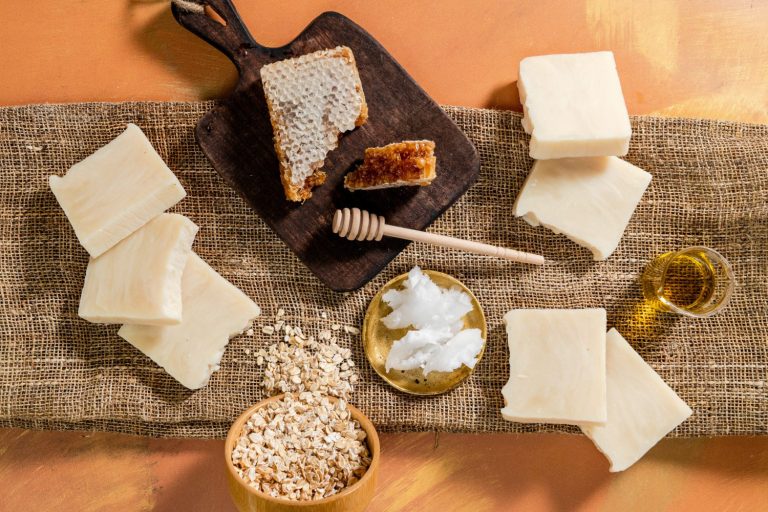
Hot process soap making
Basic Nourishing Soap with Shea Butter
Cocoa Butter Soap
Oatmeal Honey Soap
Milk and Yogurt Soap
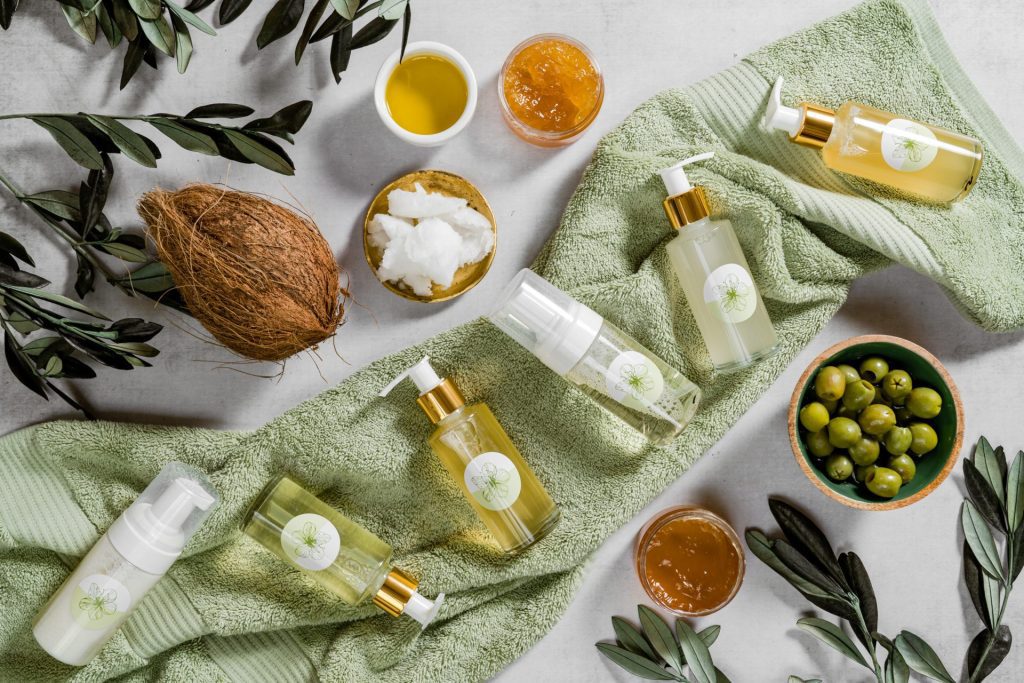
Liquid soap making
Classic Olive Oil Castile Soap
Duel-lye Olive Oil Castile Soap
Universal Soap
Household Cleaning Soap
Who is the course for?
Complete beginners
Learn a new skill. Start from the basics and progress to advanced soap making, all in one course.
Experienced soapers
Work with advanced ingredients, learn soap swirling techniques and add hot process and liquid soap making to your skill set.
Business owners
Create beautiful soaps to sell. Add a cost-effective and popular new product to your cosmetics range.
Praise for the School of Natural Skincare



Proudly featured in...






Why study with us?
Learn from and be supported by professional cosmetic scientists.
Tried and tested formulations. On-demand learning. Start as soon as you are ready!
Multi-award winning and accredited school, established in 2010.
- Study with us for your own enjoyment and learning, or to create a beauty brand.
- Learn the science and art of making soap from professional cosmetic scientists and experienced soap makers.
- Have your questions answered by one of our professional formulators or scientists in our dedicated Tutor Q&A.
- Make soap using our tried-and-tested recipes.
- Learn how to formulate your own soap. Vary the hardness, detergency, foam and moisturizing/nourishing properties.
- Our vibrant, international student community will be with you every step of the way to provide friendly, encouraging peer support.
- On-demand learning – enroll as soon as you are ready, no need to wait for set enrollment periods.
- We are a multi-award winning and accredited school, established in 2010.
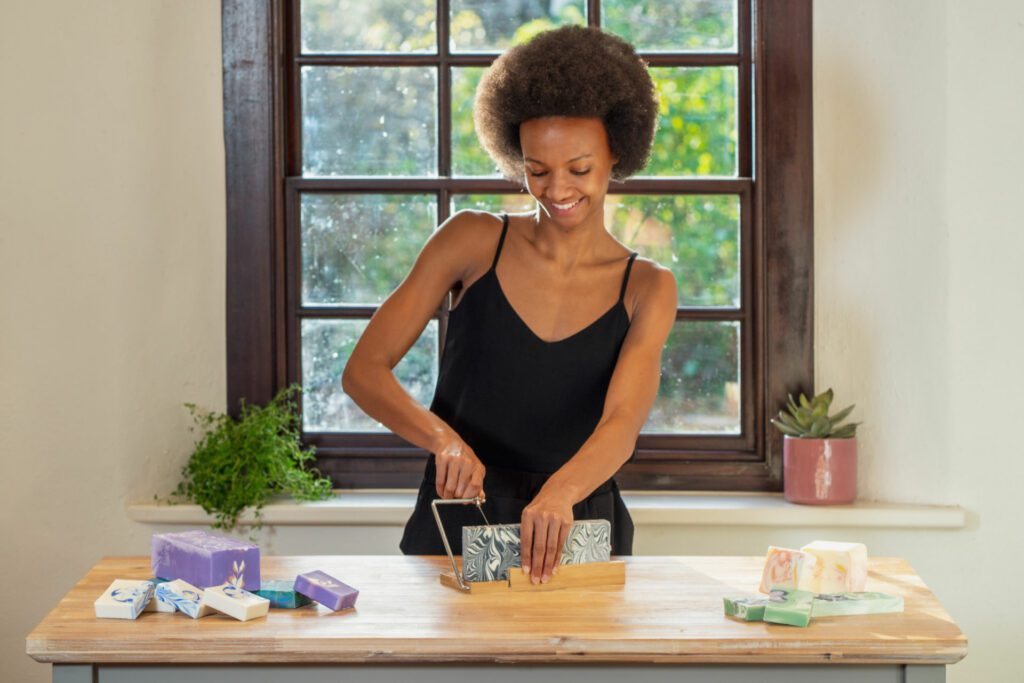
Praise for the School of Natural Skincare
Course Details
| Level | All levels: beginner, intermediate and advanced |
| Duration of access | 18 months’ access. Paid options for extending access are available. |
| Prerequisites | None. Internet access and a computer, mobile phone or tablet is needed to access the online classroom. |
| Study and practical time required | Approximately 70-120 hours, including hands-on time making soap. Most students complete the course within 6-18 months. |
| Certificate | Your certificate is issued on successful completion of the end-of-course quizzes and assignments. |
Here's what's included:

Study from anywhere in the world, in your own time.

19 in-depth modules, and 4 detailed textbooks with step-by-step instructions and beautiful photographs.

21 practical demonstration videos that show you how to make a wide variety of soaps.

23 ready-to-use soap recipes to practice with.

Guidance on formulating your own soap recipes.

Detailed ingredient, equipment and supplier information.

Easy-to-use online classroom, quizzes and activities.

Tutor support from expert soap makers.

Assignments marked personally and a course completion certificate.
Course Curriculum
Part 1: Cold Process Soap Making
Begin your soap making journey with cold process soap bars. Learn all the essential soap making theory and make your first bars of soap by following our recipes and video tutorials. Then move on to adding advanced ingredients like colors, exfoliants, clay, milk and honey to your soap, create your own soap recipes and make cupcake soaps.
Module 1: Soap Making Theory
Cold process soap is made by combining oils (and butters) with sodium hydroxide, which creates a reaction called saponification. Module 1 covers all the essential theory you need to know.
1.1 Introduction to soap making
The types and amounts of oils and butters need to be carefully chosen to create a bar of soap that has the optimum level of hardness, detergency and foam. Learn about the properties that different carrier oils and butters give to soap.
Discover soap making ingredients, oil properties, fatty acids in soap making and soap making equipment.
1.2 Theory of saponification
Learn in detail about saponification including what saponification is, saponification values, speed of saponification, additional soap qualities, soap additives and using soap calculators to create your own soap recipes.
1.3 Mandatory safety information
Making soap is a straightforward process but there are very important safety considerations which we cover in detail, including how to safely work with lye, and protective clothing and equipment.
Our video demonstrations will take you through all the equipment you’ll need and important safety considerations.
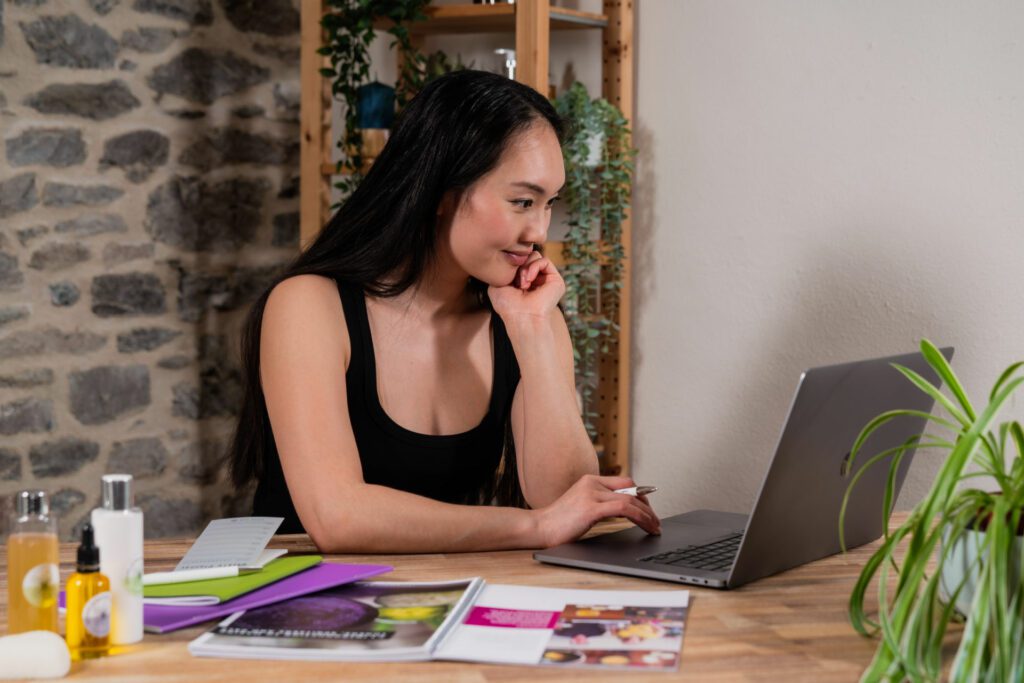
Module 2: Making Soap
Practice with our soap recipes and follow our detailed guidance to make your first perfect bars of soap!
2.1 Making cold process soap
We take you through each step of the soap making process so you are confident to follow this process yourself. There are some very specific steps that apply to soap making that don’t apply to other cosmetics, and carrying them out properly is essential for successful soap making.
2.2 Basic soap recipes
We provide you with four of our best beginner’s soap recipes so you can make a successful batch of soap on your first attempt! Receive recipes for:
- Simple Castile Soap.
- Pure Coconut Soap.
- Balanced Beginner’s Soap.
- Palm Oil-Free Soap.
Our video demonstration will show you step-by-step how to make your own soap safely.
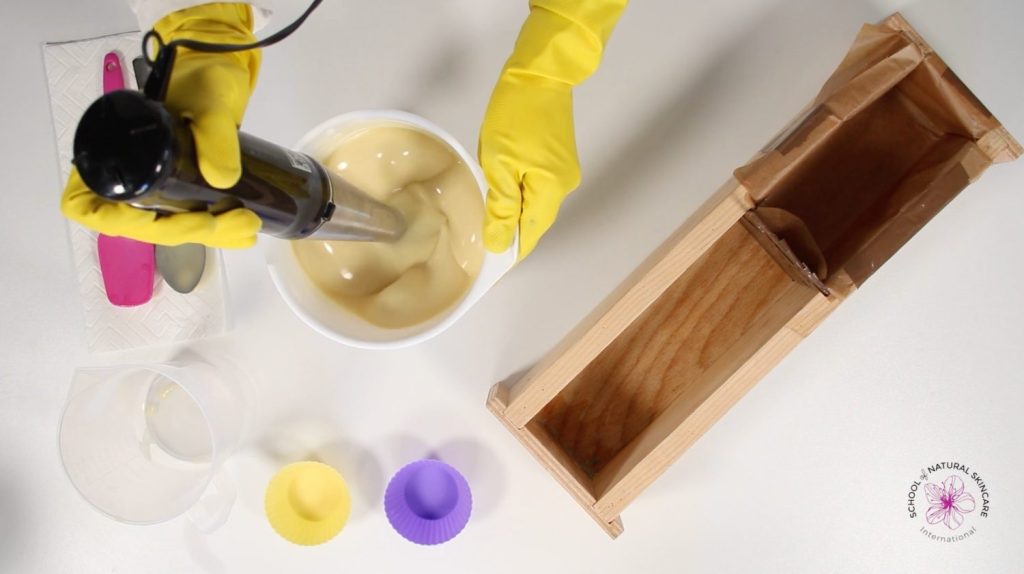
Module 3: Advanced Soap Recipes
It’s time to move on to some more advanced soap recipes using exfoliants, clay and activated charcoal.
3.1 Advanced soap recipes
We’ll show you how to add exfoliants, clay and activated charcoal to your soaps. We also share how to make soap inspired by African Black Soap. Receive recipes for:
- Exfoliating Gardener’s Soap.
- Charcoal Purifying Soap.
- Rose Clay Soap.
- African Black Soap-Inspired Soap (two versions).
Our video demonstration will show you step-by-step how to make your own advanced soap bars.
3.2 Troubleshooting cold process soap
We help you troubleshoot any issues you might have with your soap, which is especially useful if you start to formulate your own soap recipes. Ten common issues are covered in detail.
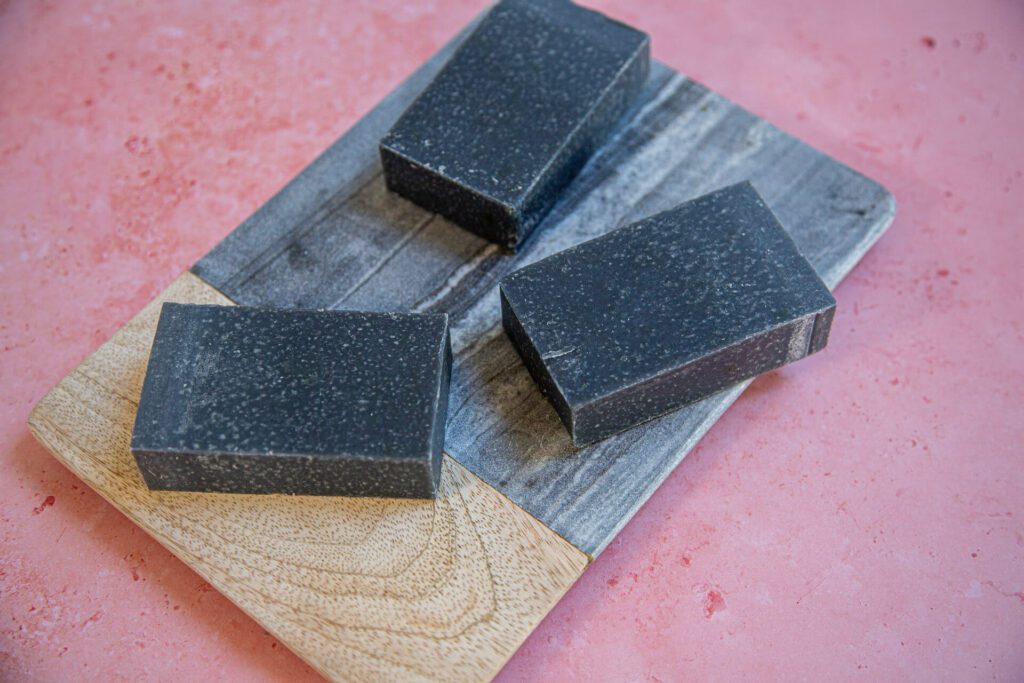
Module 4: Advanced Soap Making Techniques
Start working with advanced ingredients such as milk, honey, sugar, salt and beer. Color your soap and make cupcake and lace soap.
4.1 Using advanced ingredients in soap making: milk, honey, sugar, salt and beer
Learn how to incorporate nourishing animal milk, plant-derived milk, sugar, honey, salt and beer into your soaps! Receive recipes for:
- Nourishing Milk Soap.
- Gentle Honey Soap.
- Pink Exfoliating Salt Bars.
- Simple Beer Soap.
Our detailed video demonstration will give you the confidence to make your own.
4.2 Coloring soap
This advanced lesson on coloring soap will cover a wide range of options including:
- Mineral pigments.
- Colored micas.
- Botanical colorants.
We’ll focus on botanical colorants in particular and you’ll learn exactly how to incorporate them into your recipe (in the oil, the lye or at trace) and what shade of soap they create.
4.3 Piping soap: Making cupcake soaps
Piping soap is a fun technique used to make soaps that look like cupcakes! Discover:
- The piping soap method.
- A piped soap recipe.
- How to make soap cupcakes.
Watch our step-by-step video tutorial to see exactly how to make cupcake soaps.
4.4 Lace soap
Lace soap is a visually stunning soap! Learn how to use cake decorating equipment to create intricate lace patterns on the surface of your soap.
Our step-by-step video demonstration will show you exactly how to create these beautiful designs.
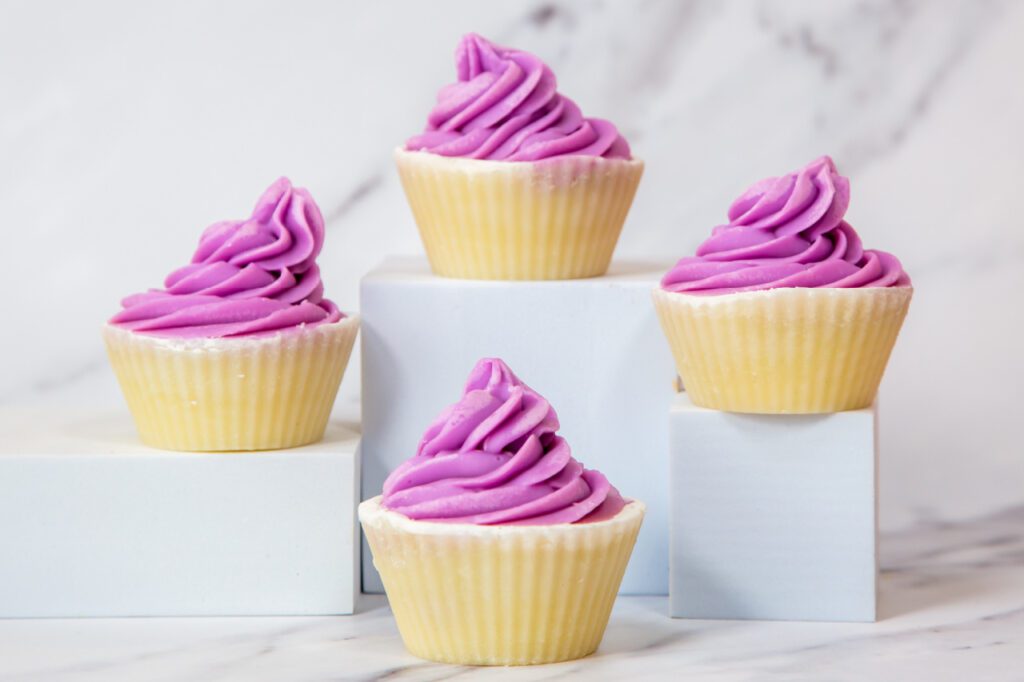
Part 2: Soap Swirling Techniques
Soap swirling techniques will allow you to take your cold process soap making skills to the next level. Learn 10 techniques to create 10 different soap designs; the results are so beautiful it is like making soap art! For a look at the designs you will learn to create, head over to our blog Cold Process Soap Designs: 10 Soap Swirl Techniques to Try.
Module 5: Starting Advanced Soap Making
Gather the equipment you need for soap swirling and discover a ‘slow moving’ soap recipe perfect for creating advanced swirls.
5.1 Starting advanced soap making
We’ll share important tips to help you succeed at soap swirling.
5.2 Equipment for making swirls
Making detailed swirls in cold process soap requires a few pieces of additional equipment. Luckily it’s easy and inexpensive to obtain and you may already have some of it at home.
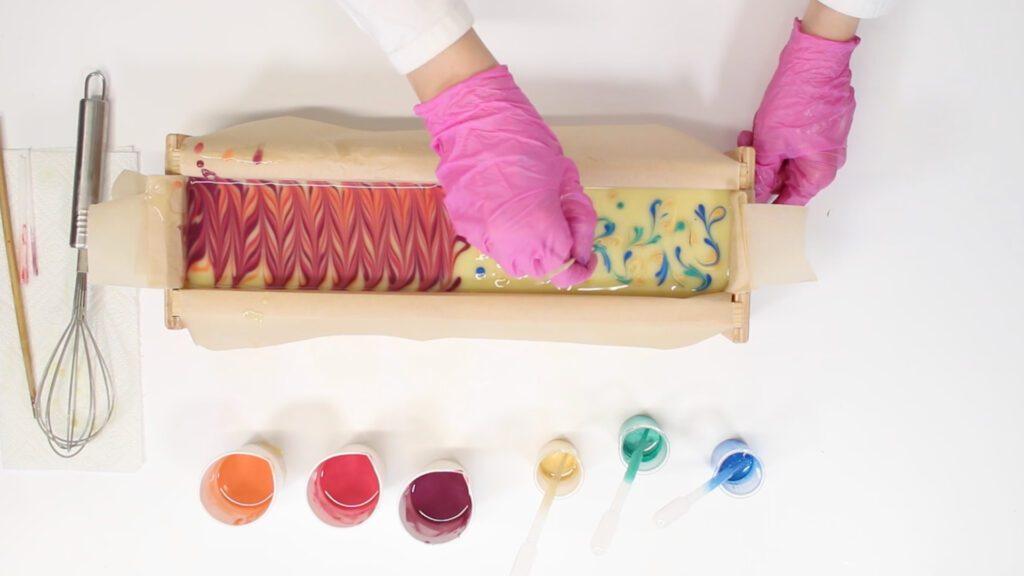
Module 6: Loaf Mold Swirl Techniques
Begin to develop soap swirling skills by practicing two easy and beautiful techniques used when making soap in a loaf mold: the drop swirl and in-the-pot swirl.
6.1 Loaf mold swirl technique 1: Drop swirl
Drop swirls are simple and easy-to-make designs in cold process soap. The soap mixture is divided into two or more parts, each part colored differently. The soap is then poured into a loaf mold, in smaller portions, rotating the colors.
Our video tutorial and step-by-step instructions with photos will show you exactly how to create a drop swirl.
6.2 Loaf mold swirl technique 2: In-the-pot swirl
Soap mixtures of different colors are mixed ‘in the pot’ as opposed to in the mold. Some of the soap colors blend with the others whilst some remain separated, creating a lovely effect.
Our video tutorial and step-by-step instructions with photos will show you exactly how to create an In-the-pot swirl.
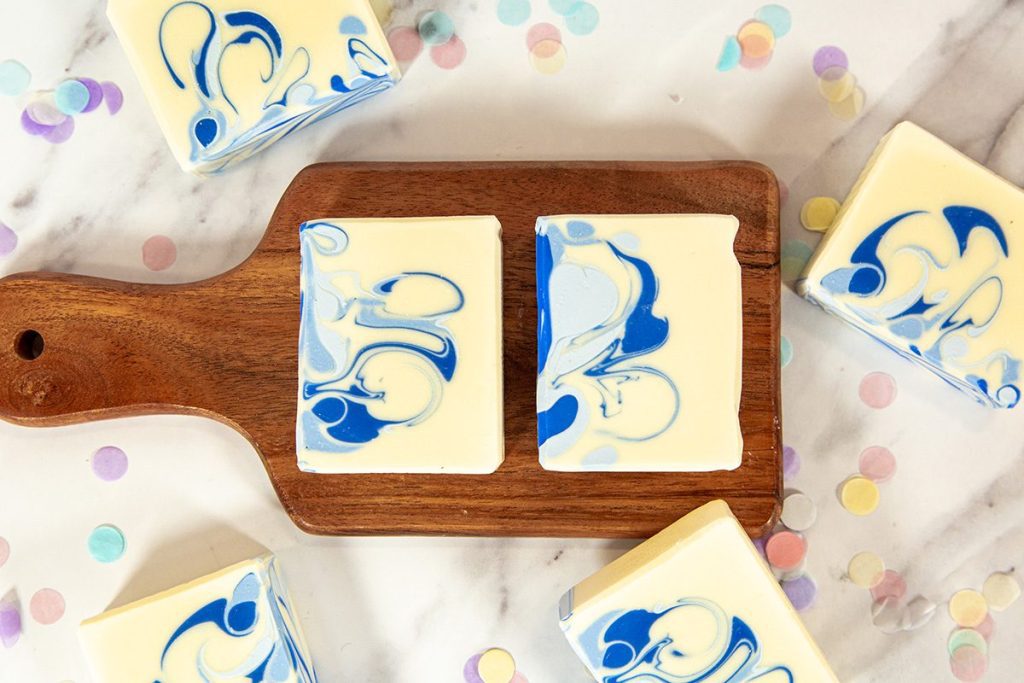
Module 7: Advanced Loaf Mold Swirl Techniques
Build on your skills by learning the Taiwan swirl and hanger swirl techniques, which are a little more advanced. Marvel at the stunning soap you create! Then master the challenging secret swirl.
7.1 Advanced loaf mold swirl technique 1: Taiwan swirl
A very elegant soap swirl and fairly easy to make in a loaf mold. A rod is used in a specific way to create a swirl pattern.
Our video tutorial and step-by-step instructions with photos will show you exactly how to create a Taiwan swirl.
7.2 Advanced loaf mold swirl technique 2: Hanger swirl
The hanger swirl technique requires a wire. It can create many different results, including a zig-zag design or round swirl pattern, depending on how soap colors are poured into the mold, and how the wire is then moved to swirl the colors.
Our video tutorial and step-by-step instructions with photos will show you exactly how to create a hanger swirl
7.3 Advanced loaf mold swirl technique 3: Secret swirl
The secret swirl is a challenging swirl that requires good experience with soap making. It is called a secret (or hidden) swirl since the swirling result is not visible until the soap is cut into bars.
Our video tutorial and step-by-step instructions with photos will show you exactly how to create a secret swirl.
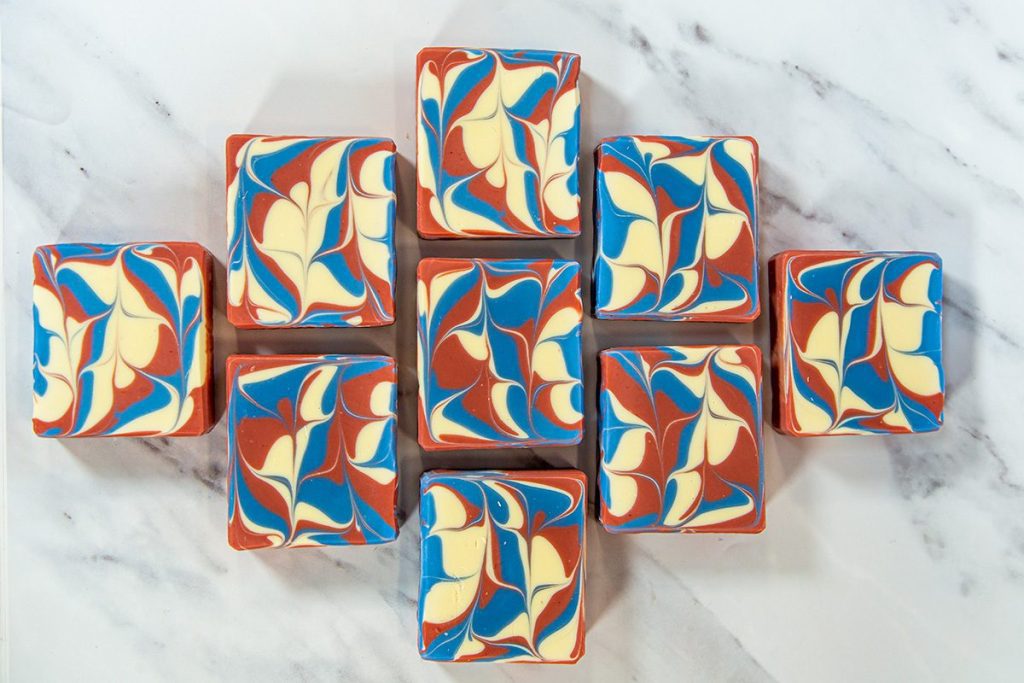
Module 8: Slab Mold Swirl Techniques
Discover three swirl techniques that are made in a slab mold rather than a loaf mold. The column pour and pipe divider swirl techniques are easy to achieve and create beautiful results. The peacock swirl takes more time, but the end result is worth the effort.
8.1 Slab mold swirl technique 1: Column pour
An object that acts as a ‘column’ is placed into the middle of a slab mold and different soap colors are poured onto the column. This creates concentric circles that are then swirled with a rod.
Our video tutorial and step-by-step instructions with photos will show you exactly how to create a column pour design.
8.2 Slab mold swirl technique 2: Pipe divider swirl
This technique utilizes PVC pipes (like the ones used in plumbing) and soap dyed in different colors. Some colors are poured into the pipes and others into the mold.
Our video tutorial and step-by-step instructions with photos will show you exactly how to create a pipe divider swirl.
8.3 Slab mold swirl technique 3: Peacock swirl
The peacock swirl takes quite a long time to create, because the different colored soap is poured into the mold in thin lines. A tool called a ‘soaping comb’ is very handy for this swirl as many parallel lines are required.
Our video tutorial and step-by-step instructions with photos will show you exactly how to create a peacock swirl.
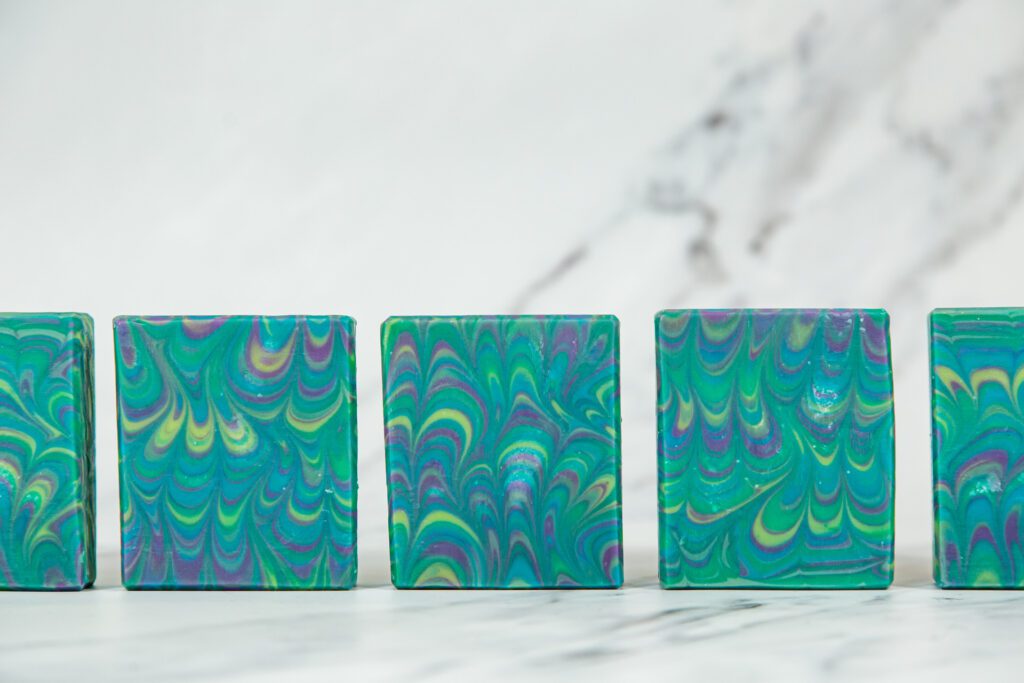
Module 9: Decorating The Top Of The Soap
Learn simple techniques to decorate the top of a soap loaf, to make it look prettier. Use leftover colored soap to create a simple swirl or shimmery mica to create a gorgeous mica swirl.
9.1 Simple swirl
A rod or chopstick is used to create swirls just at the very top of the soap.
Our video tutorial and step-by-step instructions with photos will show you exactly how to create a simple swirl.
9.2 Mica swirl
Shimmery mica can be used to decorate the top of a soap, giving a lovely shimmery result.
Our video tutorial and step-by-step instructions with photos will show you exactly how to create a mica swirl.
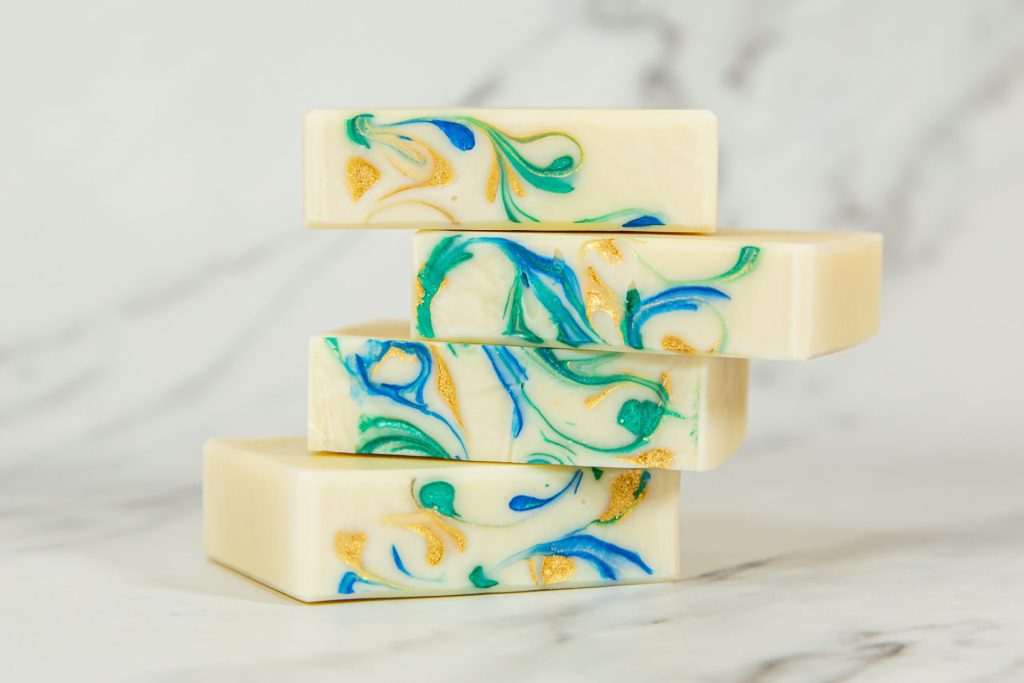
Part 3: Hot Process Soap Making
Hot process soap is made at higher temperatures than cold process (usually 50-100°C) and a slow cooker (or crock pot) is used to ‘cook’ the oil mixture while it saponifies.
The soap making process can be very quick, even 30 minutes from start to finish, depending on the temperature you are working with. In hot process soap you can control the post-cook superfat, which means you can make very nourishing soaps.
Module 10: Introduction to Hot Process (HP) Soap Making
Learn about the benefits of hot process soap making and the differences between hot and cold process soap making.
We’ll explain how to calculate the ‘post-cook superfat’ in your recipe. This is ‘extra fat’ (for example oils or butter) that is added after saponification so it does not react with the lye and turn into soap but instead it adds extra nourishing properties to the soap.
We’ll also explain how to calculate the amount of water in your recipe (which uses a different method than in cold process soap making).
Lessons in this module include:
- Benefits of hot process soap making.
- Differences between hot and cold process soap making.
- Mandatory safety information.
- Soap making terminology.
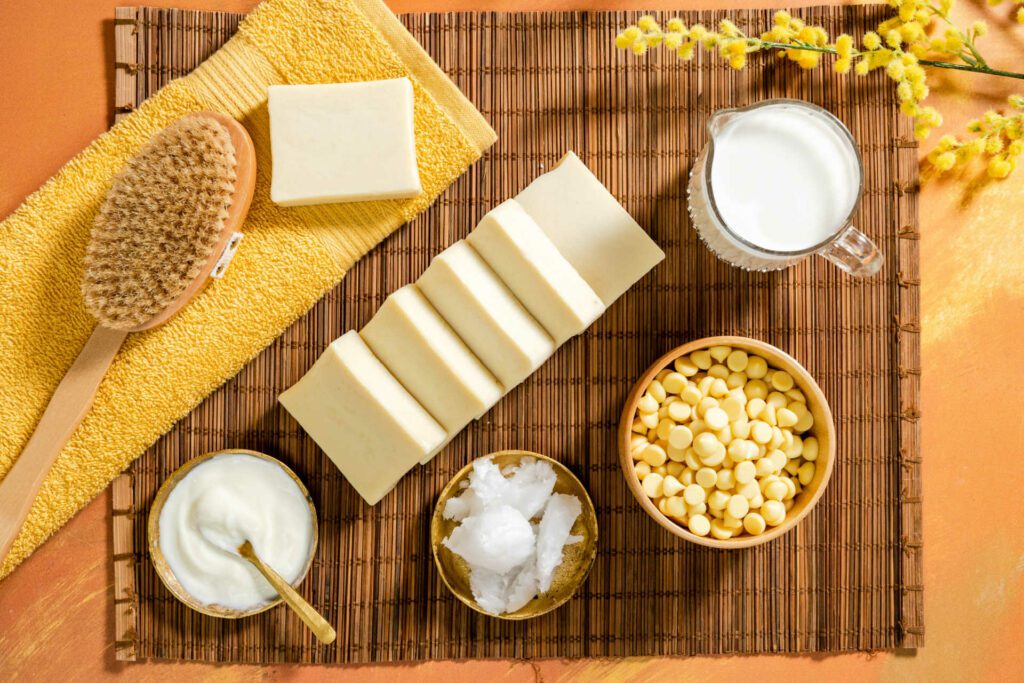
Module 11: Making Hot Process Soap
Hot process soap can be made at either low or high temperatures. We’ll compare the two methods and you’ll learn all the steps required including how long to mix the soap, how long to leave it to ‘cook’ and how you’ll know when it’s ready.
We’ll provide a detailed step by step guide with photos to illustrate each step.
Lessons in this module include:
- Low temperature vs high temperature hot process soap making.
- Hot process soap making overview.
- The soap making process: hot process soap (low temperature).
- The soap making process: hot process soap (high temperature).
Our video tutorials and step-by-step instructions with photos will show you exactly how to create hot process soap both at low temperatures and high temperatures.
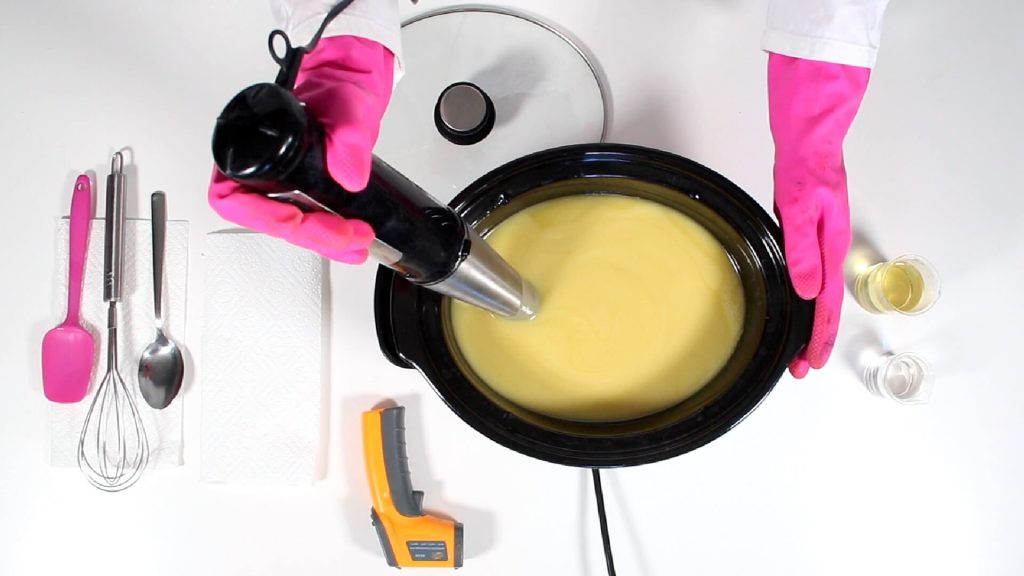
Module 12: Variations on the Hot Process Soap Making Method
Learn how to make hot process soap without a slow cooker and how to make fluid hot process soap for creating soap swirls.
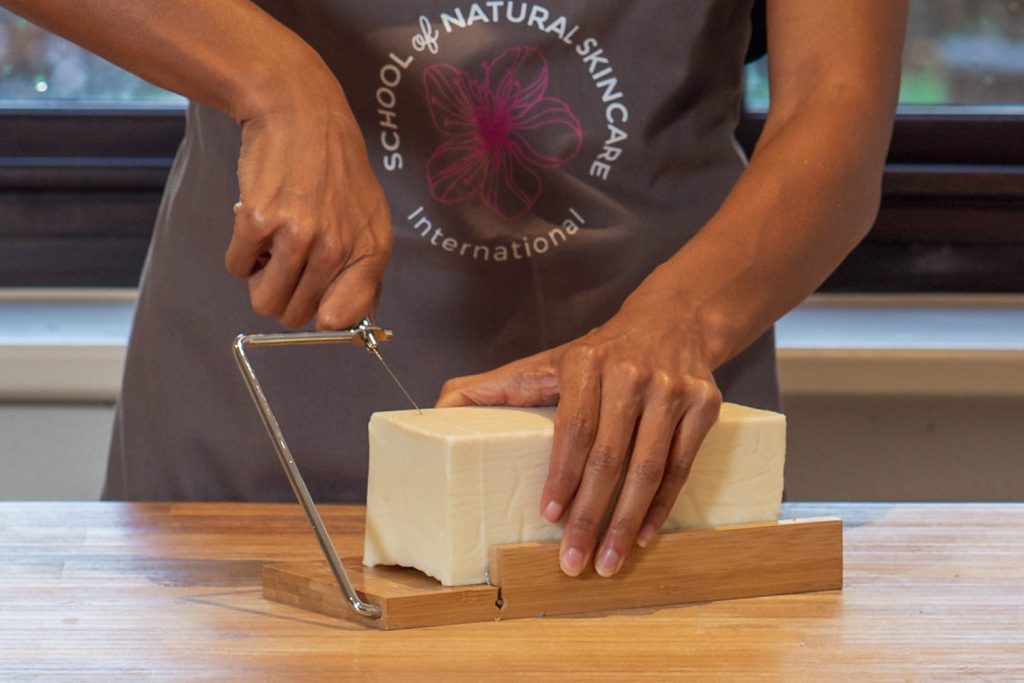
Module 13: Hot Process Soap Recipes
We share four gorgeous hot process soap recipes for you to practice with:
- Basic Nourishing Soap with Shea Butter.
- Cocoa Butter Soap.
- Oatmeal Honey Soap.
- Milk and Yogurt Soap.
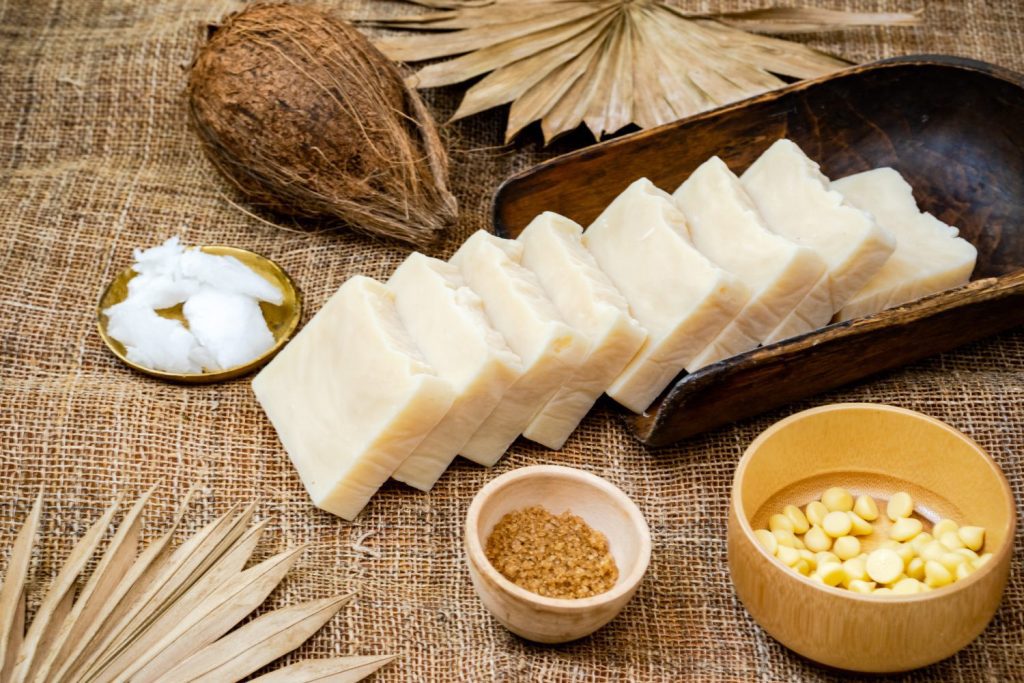
Part 4: Liquid Soap Making
Once you’ve mastered making bar soap, liquid soap making is an exciting next step! There are similarities but also important differences between liquid and bar soap which we cover in detail.
Liquid soap recipes can be really simple, in some cases using just three ingredients: olive oil, lye and purified water. Depending on the recipe used you can make liquid soap for the hands and body or even as a household cleaner for dishwashing.
Module 14: Introduction To Liquid Soap Making
We’ll begin by looking at the differences between liquid soap and surfactant-based ‘soap’ and also the differences between making soap bars and liquid soap. This is essential to understand before proceeding with liquid soap making.
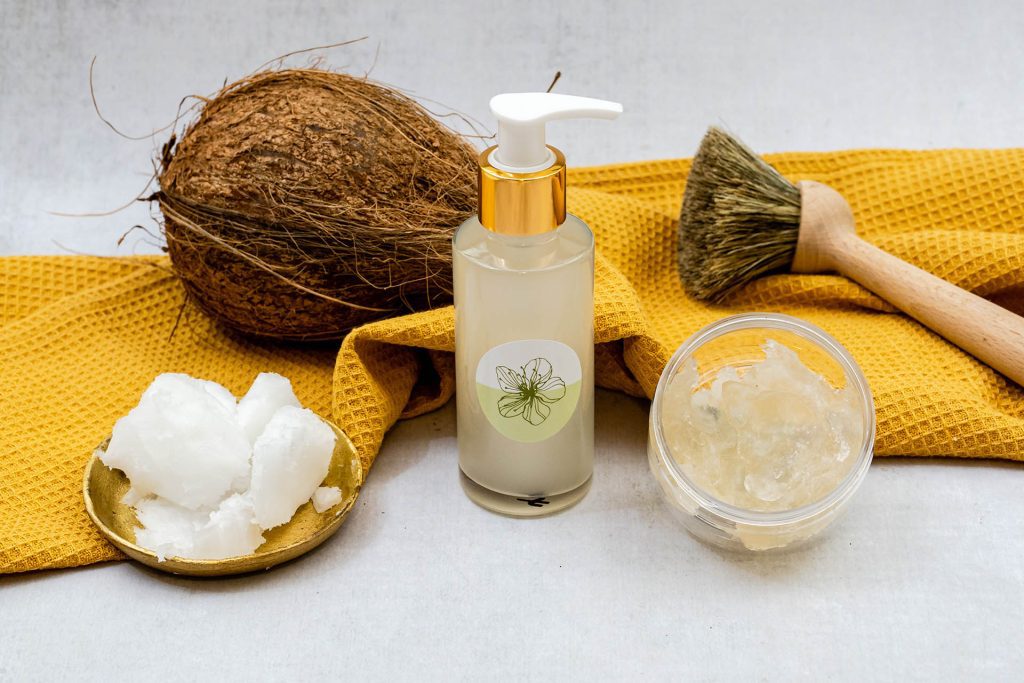
Module 15: Working With Potassium Hydroxide (KOH)
Liquid soap is made with a different lye than bar soap. So far in the course you have worked with sodium hydroxide (NaOH), now it is time to learn how to work with potassium hydroxide (KOH).
It’s important to know the purity of your KOH to create a clear (rather than cloudy) soap. Follow our video tutorial to learn how to test the purity of your KOH.
In this module we’ll cover:
- Introduction to working with potassium hydroxide (KOH).
- KOH purity setting in soap calculators.
- Testing the purity of KOH.
- KOH concentration in lye solution.
- Combining KOH and NaOH.
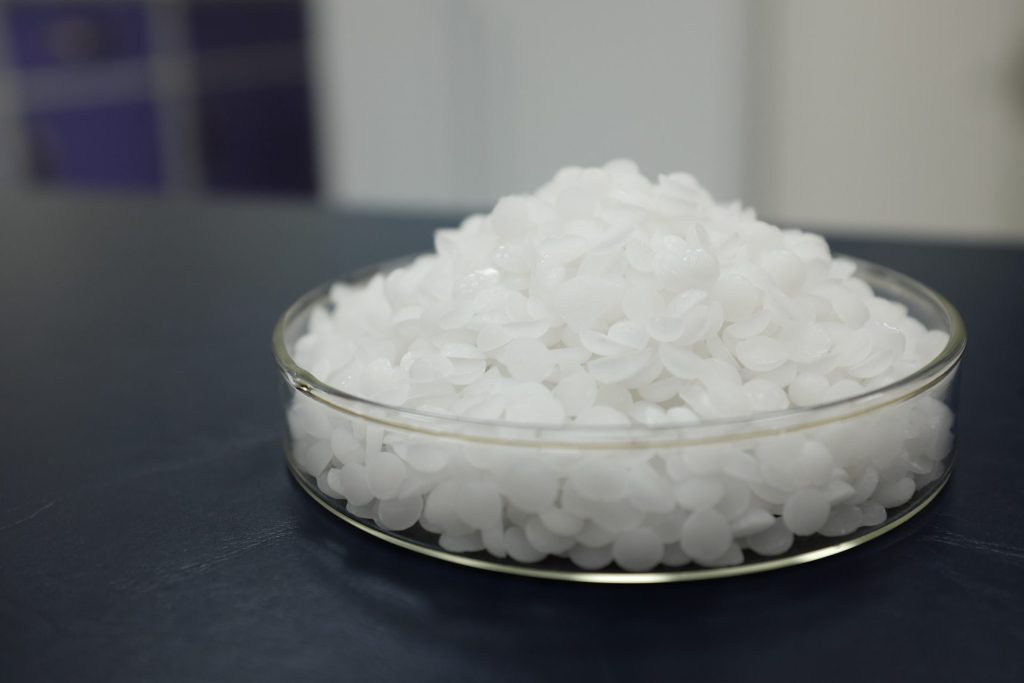
Module 16: Properties And Characteristics Of Liquid Soap
Liquid soap is very different to bar soap and in this module you’ll learn about the important properties and characteristics of liquid soap, plus some of the key steps involved in making liquid soap.
- pH.
- Neutralization.
- Transparency.
- Superfat.
- Viscosity.
- Concentration and dilution.
- Preservation.
- Thickening the soap.
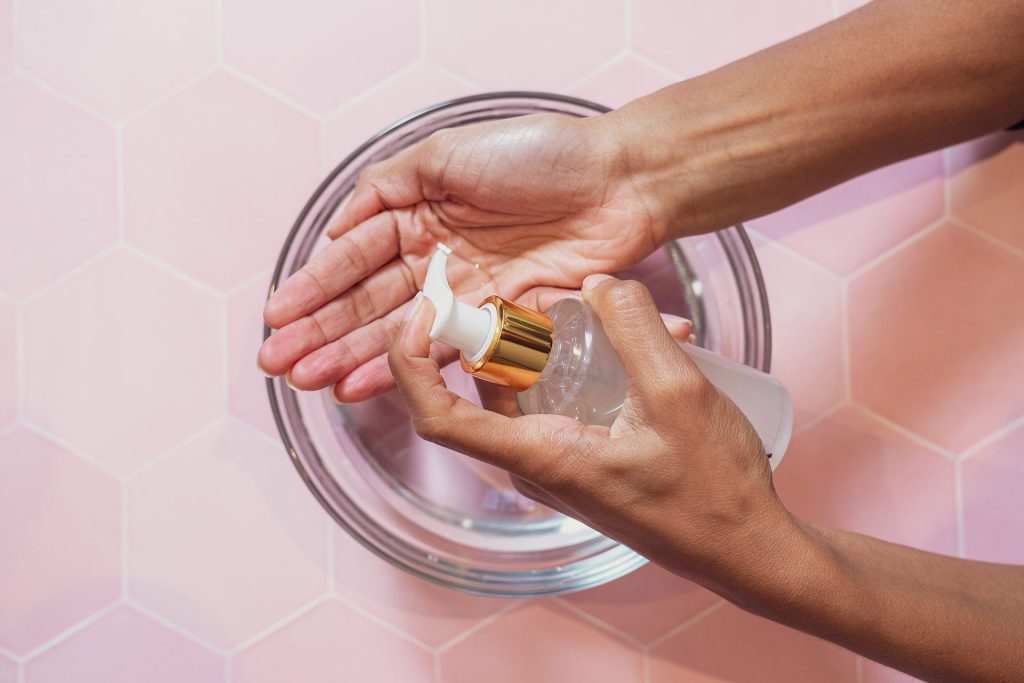
Module 17: Making Liquid Soap
The first part of liquid soap making is similar to hot process soap making as both are done using a slow cooker. There are then some steps unique to liquid soap making such as diluting the soap paste to make liquid soap and then thickening the liquid soap into a gel (if desired).
Lessons in this module include:
- Liquid soap making overview.
- Hot process low temperature liquid soap.
- Hot process high temperature liquid soap.
- Cold process liquid soap.
Our video tutorial and step-by-step instructions with photos will show you exactly how to create liquid soap and thicken it.
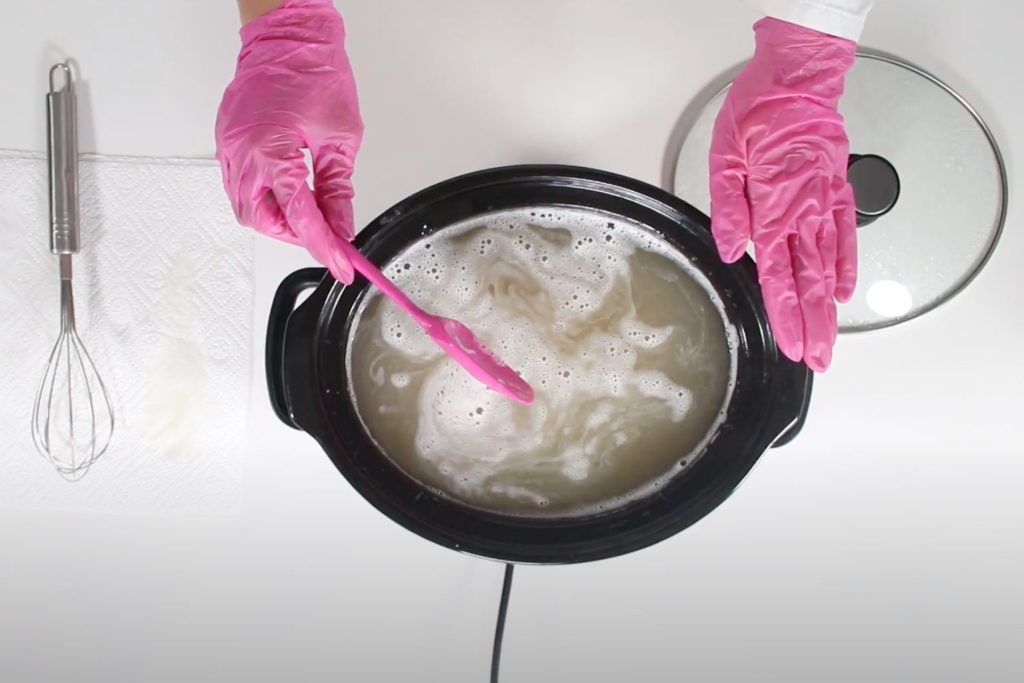
Module 18: Liquid Soap Recipes
We share four tried-and-tested liquid soap recipes for you to practice with:
- Classic Castile Soap.
- Duel-lye Castile Soap.
- Universal Soap.
- Household Cleaning Soap.
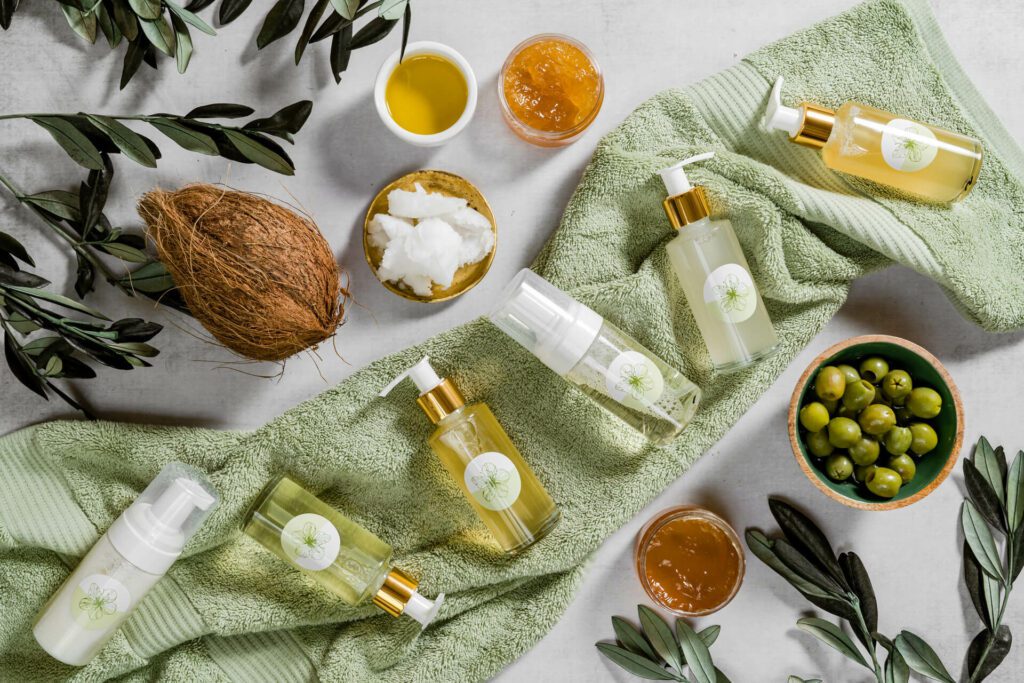
Module 19: Additional Liquid Soap Ingredients
Additional ingredients can be used to add fragrance and color, or to improve the gentle and nourishing properties of the soap, increase the lather or create a more hydrating soap.
In this module you will learn about:
- Essential oils/fragrance oils.
- Glycerin.
- Aloe vera.
- Sugar.
- Panthenol.
- Sodium lactate.
- Colorants.
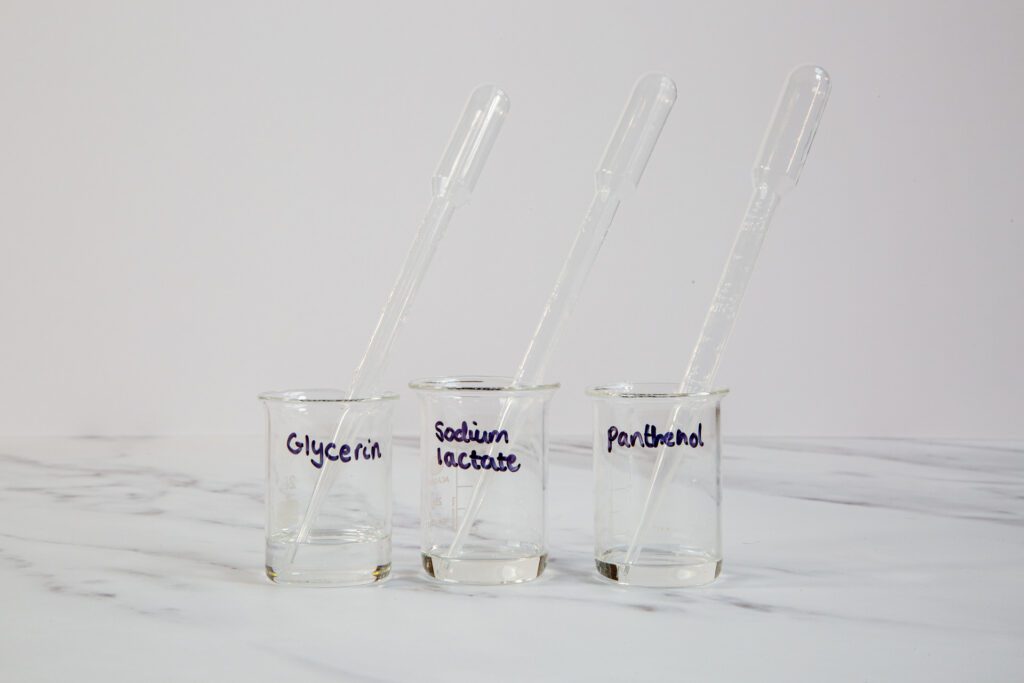
Fast action offer!
Enroll by Friday 8th July 2022 (midnight Los Angeles) and receive three bonus classes for free.
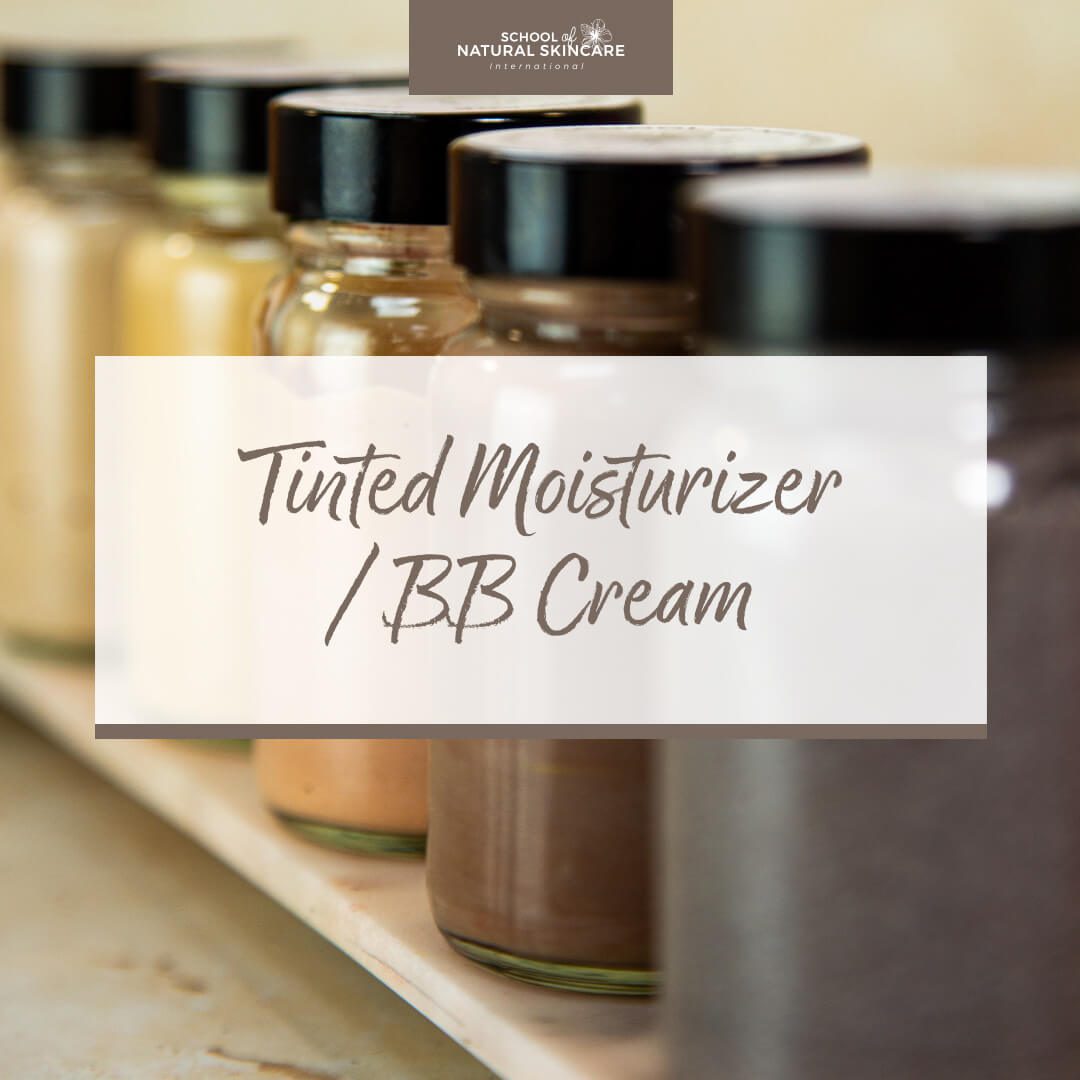
Tinted Moisturizer / BB Cream
Receive a tinted moisturizer formula, in a range of five shades, that offers both skincare benefits (moisturization/hydration) and cosmetic benefits (sheer coverage for radiance and improved complexion). This is a lightweight formula that smooths the skin’s appearance, and is a lovely alternative to full coverage foundation.
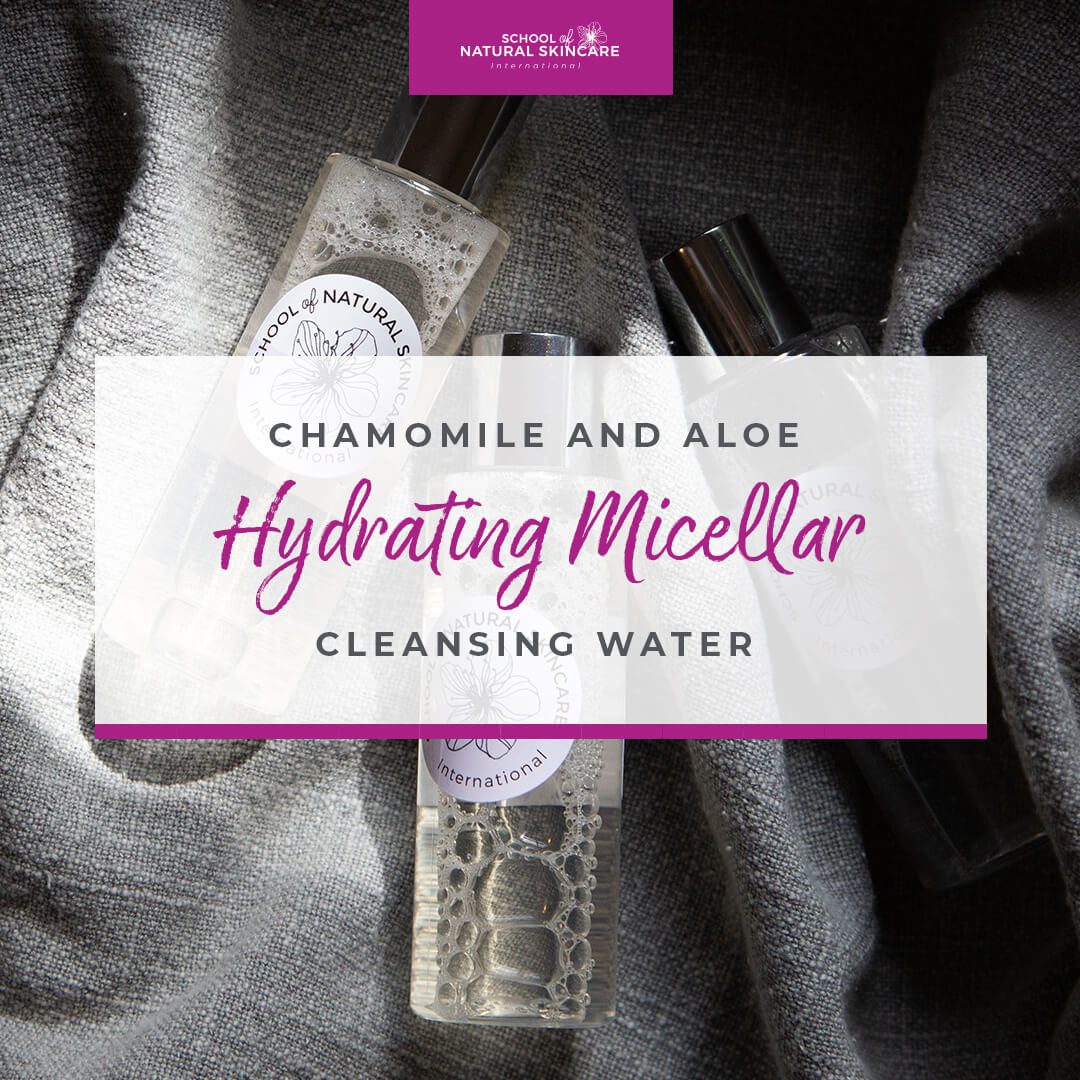
Micellar Cleansing Water
This beautifully gentle micellar cleansing water is suitable for all skin types and is a great alternative to makeup wipes, being both kind to the skin and more environmentally friendly, as it can be applied with a reusable cosmetic pad. A leave-on cleanser (requiring no rinsing off), it is perfect for using on the go, or for removing the last traces of makeup.
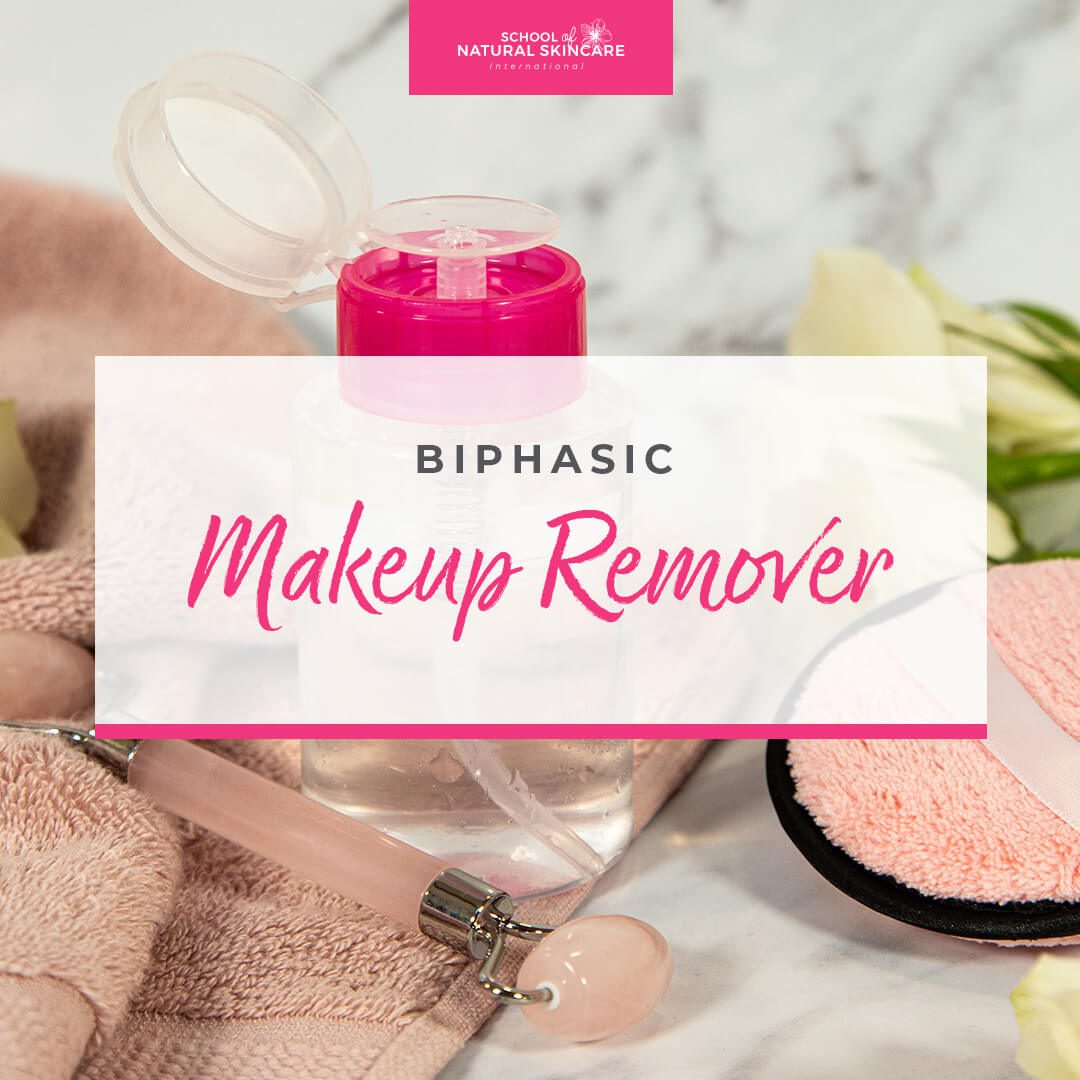
Bi-Phase Makeup Remover
This dual-phase makeup remover is designed to remove oily impurities from the skin’s surface, solubilizing even the most difficult to remove products including waterproof mascara, foundation and sunscreen, making them easy to wipe away – no scrubbing needed! This gentle cleanser is surfactant-free and ideal for the delicate eye and lip areas, making it an ideal first step in a double-cleanse system.
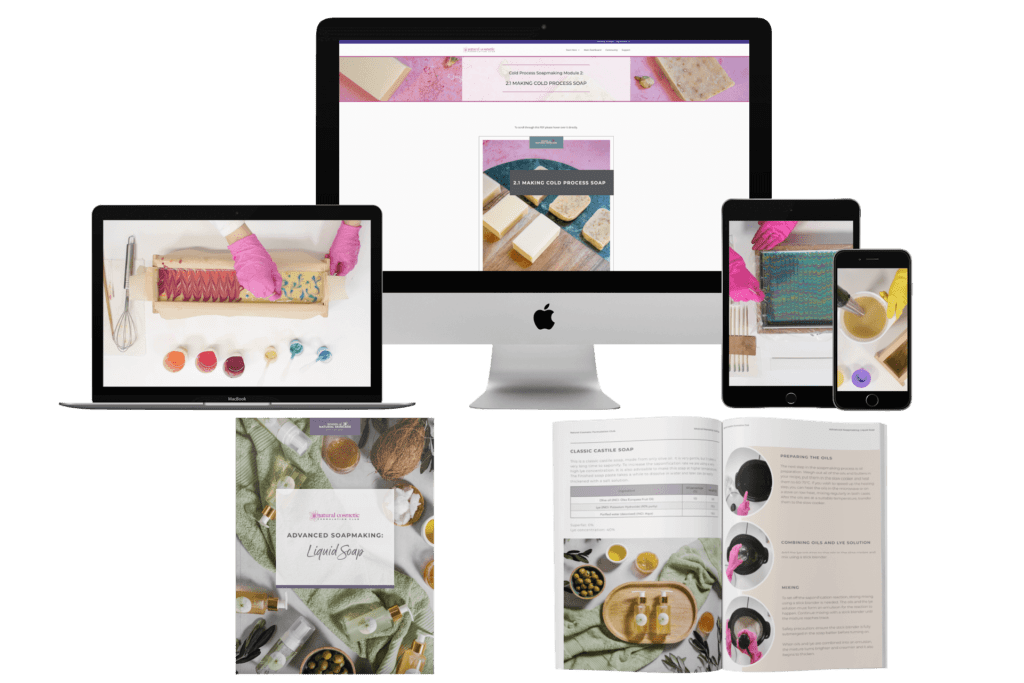
Join the Diploma in Soap Making
For a limited time only US $997 $797
We accept all major debit and credit cards.
By joining the course you accept our terms and conditions found here.
Praise for the School of Natural Skincare
Frequently Asked Questions
This course is suitable for both complete beginners to soap making and those with some experience.
If you are a complete beginner you’ll start from the basics by making simple cold process soap and progress to advanced soap making, hot process and liquid soap making all in one course.
If you are an experienced soaper confident with cold-process soap making already, you’ll learn how to work with advanced ingredients, learn soap swirling techniques and add hot process and liquid soap making to your skill set.
All of the ingredients in the recipes provided are approved for use by natural and organic standards such as COSMOS. You’ll work with a wide range of natural carrier oils, plant butters, milk, yogurt, beer, honey, sugar, salt, botanicals, clay, charcoal and more!
Even the more ‘chemical sounding’ ingredients such as sodium hydroxide and potassium hydroxide are permitted for use in soap making by natural and organic standards. They are used to create the saponification reaction and are not present in the finished soap.
There are several options for coloring soaps which we cover on the course including using natural botanical options. Mineral pigments are very useful to create bright, vivid colors and these are nature-identical and approved for use by natural and organic standards such as COSMOS.
It is easy to make vegan soap and the majority of the recipes provided in the course are vegan (only a few recipes use milk, yogurt or honey as additional ingredients).
Plenty of palm-oil free recipes are also provided. Where we have used palm oil we have indicated that it is sustainably sourced palm oil.
By choosing organic oils and butter you can make organic soap, for organic certification if you wish.
Soap making involves working with lye (sodium hydroxide or potassium hydroxide) to create a saponification reaction. Both are caustic chemicals so it is essential to follow the proper lye safety guidelines when making soap. We cover lye safety in detail throughout the course and our video demonstrations show you how to make soap safely. A quick guide to lye safety can also be found here: Lye Safety in Soap Making + 10 Safety Tips to Follow
Once you are familiar with the safety guidelines and wear the proper protective equipment (long, thick gloves, goggles, a mask/respirator and protective clothing), soap is perfectly safe to make.
The only risk is attempting to make soap without knowing the safety precautions to follow, which is why we don’t advise following tutorials on YouTube or other social media platforms as they often skip this important information and fail to show best practices.
Soap making supplies are very easy to find both in online and brick-and-mortar stores. As part of the course you receive a comprehensive global supplier list, featuring hundreds of cosmetic suppliers from all around the world.
Yes! The course is a fully online training program hosted in our online classroom. It is designed to be taken from home from anywhere in the world. We provide information on ingredient suppliers in many different countries. We have students in over 150 countries so you’ll be joining a thriving community of global students when you join!
Yes, when you have finished the course there will be quizzes and several assignments to submit. These are straightforward to complete and based on the material covered in the class. On successful completion, your course certificate will be issued.
Now! You can get started with the course right away.
The course is a self-study, self-paced course so you can study at a time that suits you. All the lessons are pre-recorded, so you don’t need to worry about joining us at a set time.
You will have access to the course inside our Natural Cosmetic Formulation Club for 18 months from the date you enroll. You will be able to download the course textbooks to save on your own computer. Extension options are available if you wish to extend your course access.
A variety of formats are used, including comprehensive and beautifully designed course textbooks (provided as PDFs), video demonstrations, quizzes and activities.
Soap can be made with some basic kitchen/lab equipment. Here is a list of the equipment that you should consider using:
- Protective equipment (clothing, goggles, mask/respirator, heavy-duty gloves).
- Heating equipment to melt butters eg bowls and saucepans to create a double boiler.
- Containers/ beaker/bowls for weighing and mixing. You will need heat resistant and chemical resistant containers to make your lye solution in, to melt the oils and to mix the soap in. Materials suitable for soap making are glass (eg Pyrex bowls, laboratory beakers), stainless steel and polypropylene plastic (common kitchen mixing bowls). Avoid all contact with aluminum.
- A thermometer. Inexpensive glass lab thermometers are sufficient, or you may like to invest in an infrared thermometer.
- A stick blender (hand-held immersion blender).
- Scales, ideally digital scales that measure to 0.1g.
- Silicone spoon and spatula
- Stainless steel spoons and whisk
- Soap making molds, for example silicone molds or wooden loaf molds. A soap cutter is useful for cutting soap loaves into your desired bar size.
In addition, for hot process and liquid soap making a slow cooker (crock pot) is required.
More details and supplier suggestions are included in the course.
We are an international school with students worldwide. US dollars are the most widely recognized and accepted currency. You can check the exchange rate for your local currency using xe.com or another currency converter.
We are very proud to have a team of qualified, experienced, professional cosmetic scientists supporting our students. They are here to help you with questions or doubts about ingredients, formulas, methods and guidelines pertaining to your specific course. You can ask them your questions in our weekly Tutor Q&A, hosted in our online platform.
If you are a member of our Natural Cosmetic Formulation Club and have already completed Cold Process Soap making, then yes, you can continue on to the other parts. You can use your credit allocation to purchase the other parts from the courses dashboard.
If you wish to start with cold process soap making then you can enroll on just this part of the course. Visit this page for more details of our Cold Process Soapmaking course.

